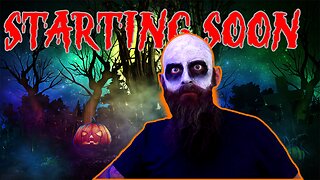TESS Completes its Primary Mission
On July 4, NASA’s Transiting Exoplanet Survey Satellite (TESS) completed its primary mission, a two-year-long survey that imaged about 75% of the starry sky. In capturing this giant mosaic, TESS has found 66 new exoplanets, or worlds beyond our solar system, as well as nearly 2,100 candidates astronomers are working to confirm.
TESS monitors 24-by-96-degree strips of the sky, called sectors, for about a month using its four cameras. The mission spent its first year observing 13 sectors comprising the southern sky and then spent another year imaging the northern sky.
Now in its extended mission, TESS has turned around to resume surveying the south. In addition, the TESS team has introduced improvements to the way the satellite collects and processes data. Its cameras now capture a full image every 10 minutes, or three times faster than during the primary mission. The faster measurements will allow TESS to better resolve brightness changes caused by stellar oscillations and to capture explosive flares from active stars in greater detail.
These changes will remain in place for the duration of the extended mission, which will be completed in September 2022. After spending a year imaging the southern sky, TESS will take another 15 months to collect additional observations in the north and to survey areas along the ecliptic – the plane of Earth’s orbit around the Sun – that have not yet been imaged by TESS.
Over 6k videos here for you to watch ad free!
It is a lot of work picking through so many news sources, subscribe now for more videos from over 280 sources plus my own videos!
Subscribe to my entertainment channel too or at least peek at my other channel !!! https://www.youtube.com/channel/UCiNFsoytAuun90UzU5AuxXg
https://www.bitchute.com/channel/YsJ0PYUWx5An/
https://www.patreon.com/user?u=26453564
https://twitter.com/KurtElliott8
https://parler.com/profile/Filegod/posts
TESS looks for transits, the telltale dimming of a star caused when an orbiting planet passes in front of it from our point of view. During its primary mission, TESS also observed the outburst of a comet in our solar system, as well as numerous exploding stars, and even watched as a black hole in a distant galaxy shredded a Sun-like star.
Music: "Drive to Succeed" from Universal Production Music
Video credit: NASA's Goddard Space Flight Center
Scott Wiessinger (USRA): Lead Producer
Francis Reddy (University of Maryland College Park): Lead Science Writer
Chris Smith (USRA): Animator
Brian Monroe (USRA): Animator
Ethan Kruse (USRA): Data Visualizer
Scott Wiessinger (USRA): Narrator
Claire Andreoli (NASA/GSFC): Public Affairs Officer
This video is public domain and along with other supporting visualizations can be downloaded from NASA Goddard's Scientific Visualization Studio at: https://svs.gsfc.nasa.gov/13663
If you liked this video, subscribe to the NASA Goddard YouTube channel: https://www.youtube.com/NASAGoddard
Follow NASA’s Goddard Space Flight Center
· Instagram http://www.instagram.com/nasagoddard
· Twitter http://twitter.com/NASAGoddard
· Twitter http://twitter.com/NASAGoddardPix
· Facebook: http://www.facebook.com/NASAGoddard
· Flickr http://www.flickr.com/photos/gsfc
-
 1:37
1:37
Kurt's News
7 days agoBlack Voters Know President Trump is the Strongest Candidate on the Issues
303 -
 1:05:56
1:05:56
LFA TV
9 hours agoTRUMP TOWN HALL LIVE 9/4/24 9pm
47.6K21 -
 4:58:20
4:58:20
Tundra Gaming Live
7 hours agoThe Worlds Worst Horror Streamer Has Heart Attack Playing Resident Evil Village
62.1K1 -
 1:34:05
1:34:05
Glenn Greenwald
9 hours agoDems Desperately Revive Russian Interference Hysteria Ahead of Election; French Politics Analyst Arnaud Bertrand On Macron's Refusal To Accept Election Results | SYSTEM UPDATE #327
91.8K88 -
 2:24:05
2:24:05
WeAreChange
10 hours agoBREAKING: Major Incident Unfolding In Georgia, What's Next!
109K42 -
 2:00:37
2:00:37
Melonie Mac
9 hours agoGo Boom Live Ep 19!
76.6K10 -
 1:56:59
1:56:59
2 MIKES LIVE
9 hours ago2 MIKES LIVE #112 News Breakdown Wednesday with LEO ZAGAMI and VIKO!
52K -
 14:50
14:50
Tundra Tactical
17 hours agoNew Body Armor Standards| OTF Knives You CAN AFFORD| and The Q Boombox!
45.7K4 -
 1:14:03
1:14:03
Sarah Westall
9 hours ago“The Most Valuable Intellectual Property in the World” - Reggie Middleton’s Patents
47.4K26 -
 1:37:35
1:37:35
Jerry After Dark
15 hours agoLive for the Barstool x DraftKings Punt Return Challenge
87.6K5